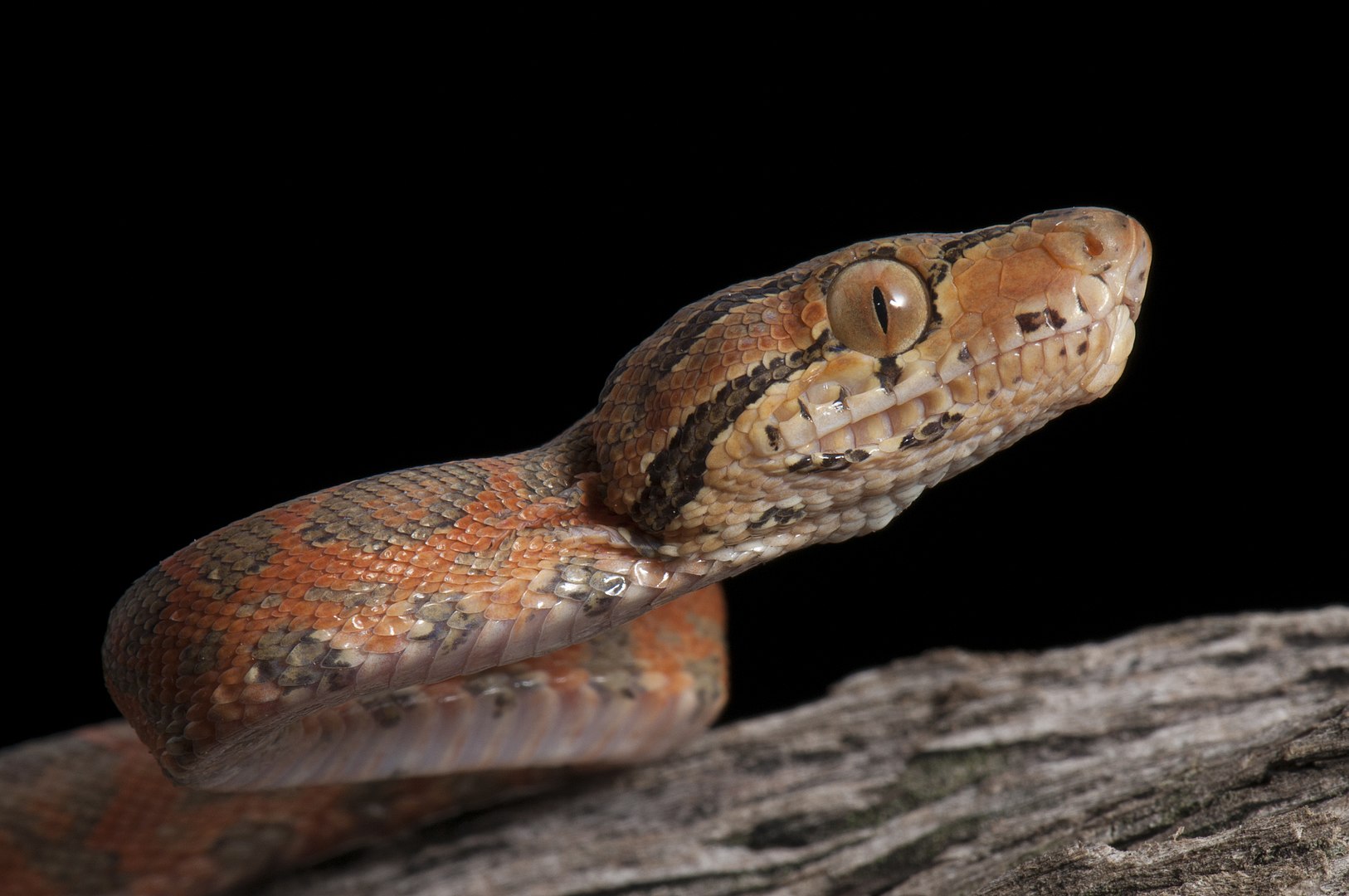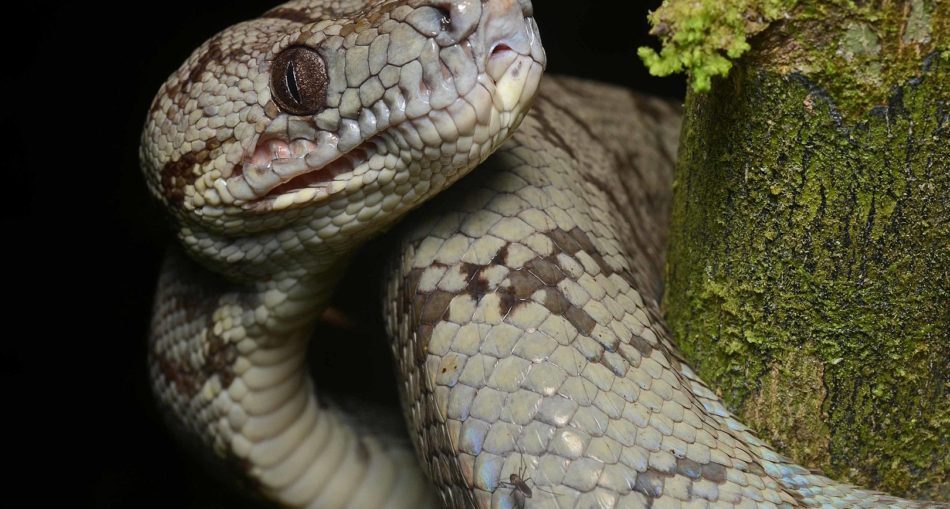An Amazon Tree Boa (Corallus hortulanus), also known as a Common Tree Boa or a Garden Tree Boa, is a non-venomous boa species found in South America more specifically Guyana, Suriname, Venezuela. This species exhibits an immense variety of colors and patterns. The basic color can be anywhere from black, brown, or gray, to any shade of red, orange, yellow, or many colors in between. Some are totally patternless, while others may be speckled, banded, or saddled with rhomboid or chevron shapes. Some reds will have yellow patterns, some yellows red or orange patterns. The average life span in the wild is 15 years. In human care, the average life-span is 20 years.
There are two subspecies of Amazon tree boa
- Corallus hortulanus hortulanus – occurs in the Guianas, Amazonia, and south-eastern Brazil (to the Tropic of Capricorn).
- Corallus hortulanus cooki – is found in southern Central America, northern Columbia, northern Venezuela, Trinidad and Tobago, and the southern Windward Islands (St. Vincent and the Grenada Bank).

Corallus hortulanus: By Renato Augusto Martins – Own work, CC BY-SA 4.0, https://commons.wikimedia.org/w/index.php?curid=58767583
Where Does The Amazon Tree Boa Live?
Amazon tree boas are found in South America in southern Colombia, east of the Andes, southern Venezuela, Guyana, Suriname, French Guiana, Amazonian Brazil, Costa Rica Ecuador, Peru, and Bolivia. These snakes live in tropical moist forest and flooded forests of the Amazon. They can also be found in dry areas such as savannahs.
Description Of The Amazon Tree Boa
Amazon Tree Boas have a very thin body and a large triangular-shaped head with long sharp teeth and large bulging eyes. They can be found in a wide variety of colors and patterns. The base color varies from pale tan to black with tinges of yellow or red. They are also marked with repeated blotches or bands of color. Their eyes can be yellowish, grayish, or reddish, and they have a reflective membrane that results in eyeshine at night. Their tongue is black.
The Amazon Tree Boa can grow to between 5 feet and 7 feet in length. Males and females are similar in size. The average weight of an adult is between 1 and 3 pounds. A distinctive feature of the Amazon Tree Boa is small, claw-like remnants of vestigial hind limbs in the cloacal region.
Diet Of The Amazon Tree Boa
Amazon tree boas are Carnivores, which means they usually feed on small mammals, frogs, birds, and small reptiles.
Habits And Lifestyle Of The Amazon Tree Boa
Amazon tree boas are solitary arboreal creatures. They spend the majority of their lives in the trees. These snakes are usually active both during the day and night. When hunting at night, they use their heat pits to sense the prey, but when they hunt during the day, they use their vision. These snakes are known to be very aggressive. They have very long needle-like teeth, which makes their bite quite painful. However, these snakes tend to give some warning of being inclined to bite, and will usually give fairly gentle bites (which can still draw blood) unless they are given reason to give a full strike. An irritated tree boa might whip its tail and release a foul-smelling liquid, commonly referred to as “musk”, that is difficult to remove. They are typically ambush hunters, sitting on a branch with the front part of their body hanging in an S-shaped curve from the branch. They can strike at prey that are a surprising distance from themselves. Prey are often pushed off the tree branch as they are struck, in which cases the snake will gather the body in several of its coils.
Reproduction Of The Amazon Tree Boa
These snakes breed once per year between March and May. They are ovoviviparous which means that they give birth to live young. The gestation period lasts 6 to 8 months. During this time, females spend time basking in the sun more often than usual because this helps with the egg development. They usually give birth to up to 12 fully-developed snakelets. The young are independent at birth and will shed their skin at 8-14 days after birth. They reach reproductive maturity after around 3 years of age. Male Amazon tree boas do not contribute to the care of their young.
Did you know?
- It has been proposed that the color patterns of Amazon tree boas help to camouflage them from predators during the day.
- Amazon tree boas play an important role in their ecosystem as they help to control populations of vertebrates they prey on.
The Amazon Tree Boa
As stated in the beginning of the article, amazon tree boas are non-venomous snakes that is found in South America i.e. Guyana, Suriname, Venezuela. They can be found in a variety of colors and patterns and note that some are even patternless. They are carnivores and they feed on frogs, birds etc. These unique yet beautiful snakes are truly something of the eye!
Article References:
- https://en.wikipedia.org/wiki/Corallus_hortulana
- https://animaldiversity.org/accounts/Corallus_hortulanus/
- https://world-of-reptiles.blogspot.com/2013/11/amazon-tree-boa-facts.html
- http://animalia.bio/amazon-tree-boa
- Main image: By Geoff Gallice – Flickr, CC BY 2.0, https://commons.wikimedia.org/w/index.php?curid=18960775







